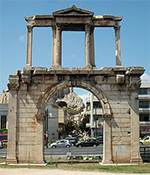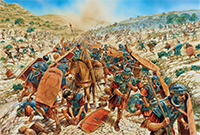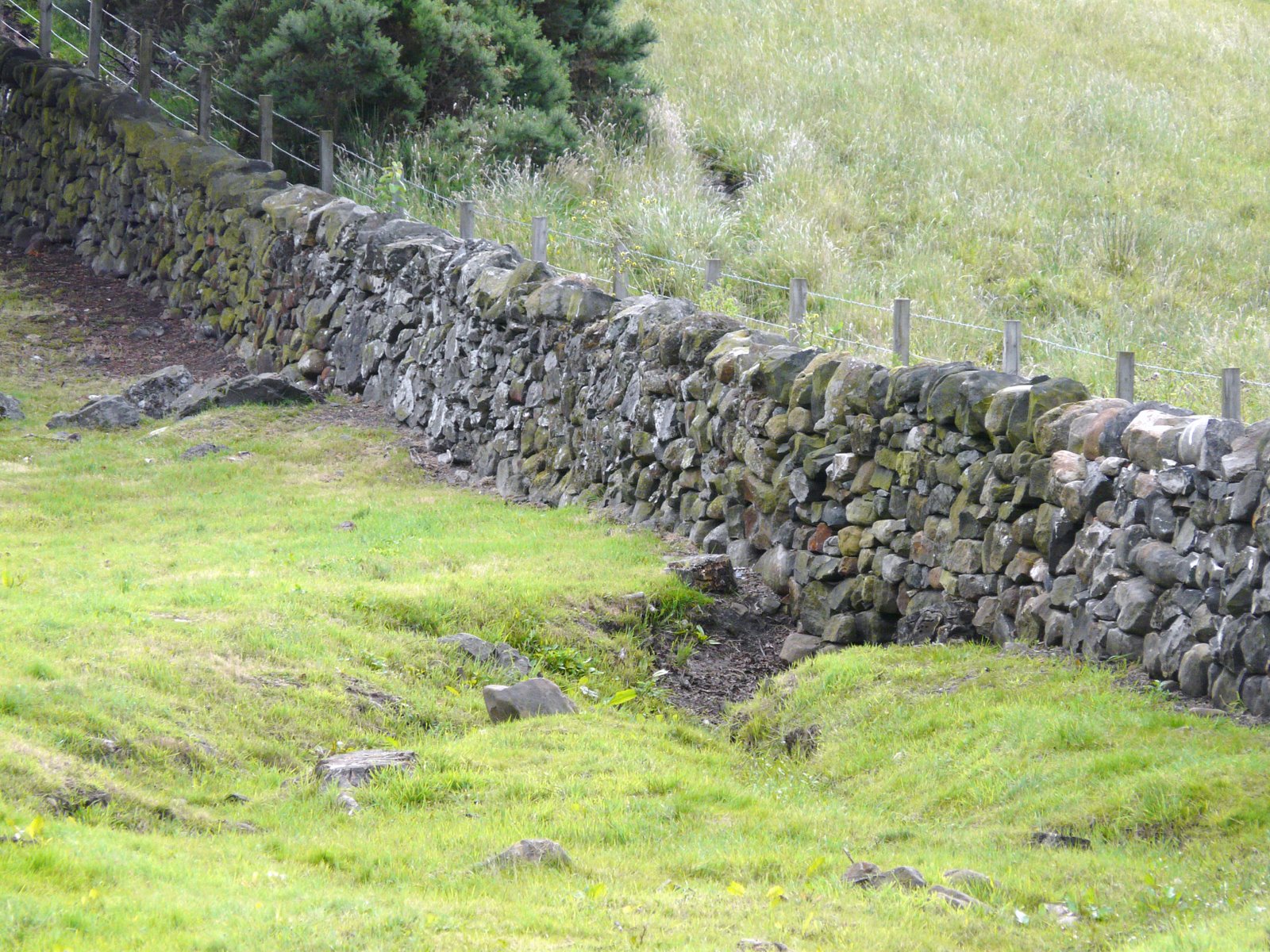The Rise and Fall of the Roman Empire
Part 4: Boundaries and Uprisings Those boundaries didn't last long. In 117, the same year in which Rome annexed Mesopotamia, that province rebelled, as did Cyprus and Egypt. Trajan waded into the fray, determined to put down yet another rebellion. Hearing of trouble in the north, he headed back to Rome. He never reached the Eternal City, falling ill in Cilicia, where he died, in 117. He had provided well, however, adopting his cousin's son as his successor. Hadrian followed him on the throne. The popularity of Hadrian as the Emperor of Rome can be judged by the sparse amount of palace intrigue while he was away, which was a large part of his reign. He wanted to see the Empire for himself, so he traveled, near and far, to the farthest reaches of Britain, in which he ordered the building of a massive wall, and to the eastern frontiers, to again shore up the defenses there. In contrast to his expansionists predecessor, Hadrian preferred maintaining the gains that Trajan and others had made. 
Hadrian's Wall, as it has come to be known, was just one of many building projects on which Hadrian had the empire embark. On the municipal level, he established cities in Egypt and Greece and Asia Minor and in the Balkans. Athens sported the Arch of Hadrian, completed in 132. (Hadrian was so enchanted with Greece that he gained the name Graeculus ("Greekling") when he was young and then, as an adult, went there more than once and even participated in the Eleusinian Mysteries.) At home in Rome, he threw his considerable influence behind the construction of the Pantheon, itself a new version of an even older temple dating to the days of the Republic. One place in which Hadrian courted some controversy was Jerusalem. He visited that ancient city in 130 and then had it rebuilt the way he wanted it to look, not the way it had looked. He gave the city a Roman name and then built a temple to Jupiter over the ruins of the Jewish Temple, which the legions of All of the travel and especially the grinding nature of ending the Second Jewish Revolt created poor health in Hadrian. He returned to Rome and took to writing poetry in what little spare time he had. He had thought ahead enough to name a successor, the proconsul of Asia Antoninus Pius, who vowed to name as his successors Lucius Verus and Marcus Aurelius. Hadrian died in 138; he was 62. Antoninus Pius did indeed succeed him. He finished several construction projects begun by Hadrian and had built a mausoleum One of his major projects of new construction was a northern version of Hadrian's Wall in Britain. The Antonine Wall, begun in 142, Rome would have occupied all of the territory in between; but although Antoninus succeeded in that regard, he didn't do any better than Hadrian had at conquering the northern tribes. Roman soldiers occupied the Antonine Wall for only eight years. As was common for most emperors, Antoninus faced warfare during his time on the throne, although none of it was of his making. He didn't participate directly but did oversee wars in Britain, Dacia, Germany, and the Middle East. Rebellions in Armenia, Egypt, Greece, and Palestine occurred on his watch. Antoninus died of a fever, in 161. As he wished, Lucius Verus and Marcus Aurelius succeeded him peacefully. Next page > Stoic and Megalomaniac > Page 1, 2, 3, 4, 5, 6, 7, 8, 9 |
|
Social Studies for Kids
copyright 2002–2025
David White




 for the departed emperor and a temple to him. Antoninus also ordered the repair of several prominent structures, including the Colosseum, the Antium aqueduct, and the Ostia baths. New roads drove more trade and commerce throughout the Empire, which enjoyed renewed prosperity, also thanks to Antoninus's fiscal discipline.
for the departed emperor and a temple to him. Antoninus also ordered the repair of several prominent structures, including the Colosseum, the Antium aqueduct, and the Ostia baths. New roads drove more trade and commerce throughout the Empire, which enjoyed renewed prosperity, also thanks to Antoninus's fiscal discipline. was 99 miles north of Hadrian's Wall. This new wall was 40 Roman miles long, or nearly 43 miles long, and ran from the Firth of Forth to the River Clyde. Nearly two dozen forts were built as well.
was 99 miles north of Hadrian's Wall. This new wall was 40 Roman miles long, or nearly 43 miles long, and ran from the Firth of Forth to the River Clyde. Nearly two dozen forts were built as well.
